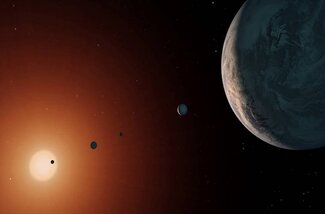Can Starship Like Chemical Rockets Escape Habitable Exoplanets
Avi Loeb looks at SpaceX's ambitions, the exploration of habitable planets like TRAPPIST-1d, and the implications for space travel.
The Debrief 7:22 pm on April 10, 2024

Avi Loeb discusses the challenges of interplanetary travel from habitable exoplanets using Starship-like chemical rockets as an example, specifically focusing on TRAPPIST-1d. TRAPPIST-1d is a rocky planet in the habitable zone of red dwarf star TRAPPIST-1 and has a planetary escape speed lower than Earth's. However, reaching interstellar space from its orbit around its host star is more challenging due to its proximity to the star, requiring much more fuel for escape.
- TRAPPIST-1d is a rocky planet in the habitable zone of red dwarf star TRAPPIST-1.
- Planetary escape speed of TRAPPIST-1d is lower than Earth's.
- More fuel is required to reach interstellar space due to its proximity to its host star.
- Intelligent alien species near dwarf stars may use alternative means for propulsion.
- TRAPPIST-1d's technological civilization would need a million times more fuel than Earth did for interstellar probes.
https://thedebrief.org/can-starship-like-chemical-rockets-escape-habitable-exoplanets/